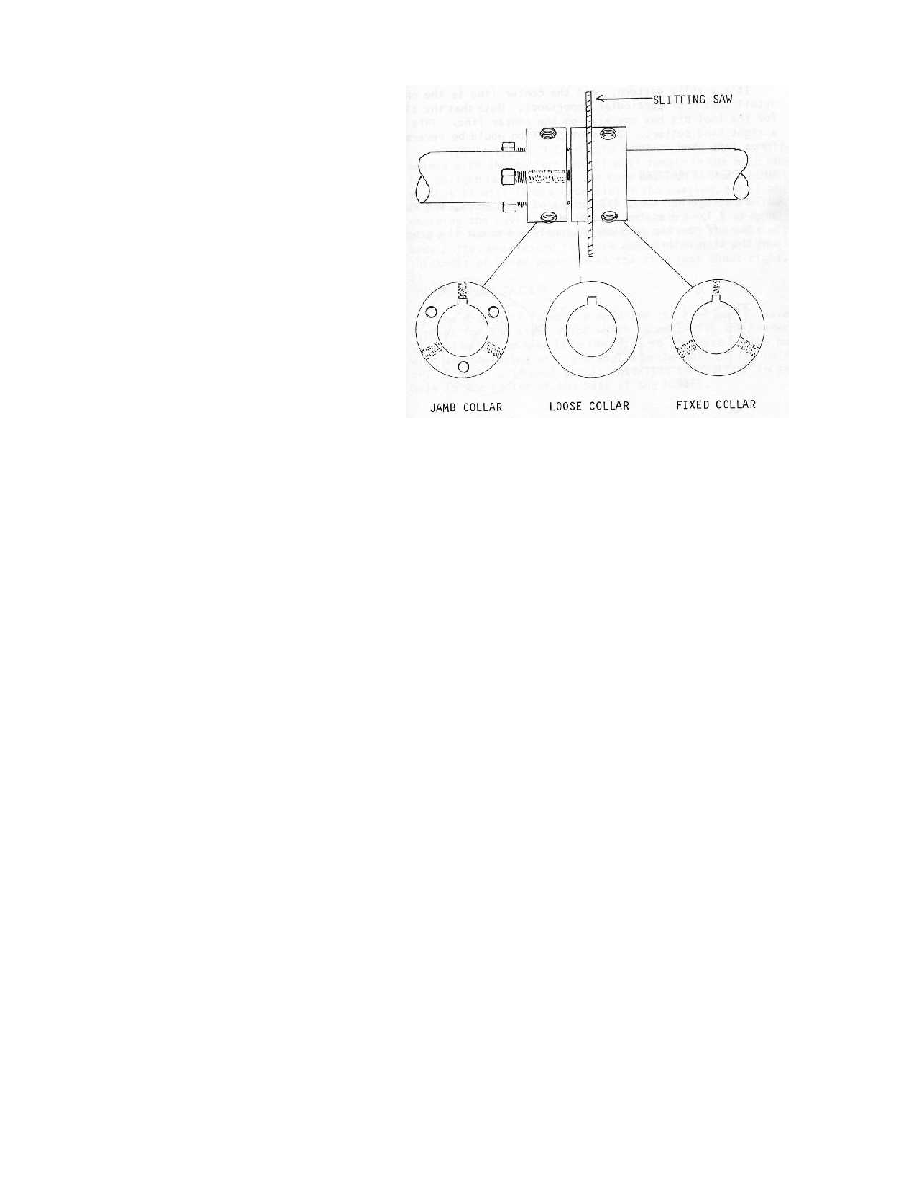
The Gingery horizontal mill arbor. I
would replace the three setscrews that
position the fixed collars with just one
setscrew and a clamp bolt (or bolts) like the
horizontal mill cutter.
If you don't already own the Gingery
casting and cast machine tool books, buy
them! Combining the power of the
MultiMachine with skills that you learn
from building the Gingery tools will let you
build almost anything!
I mentioned the third bearing earlier. It locates the whole spindle assembly. It serves as a thrust
bearing which is necessary with the roller bearing spindle because these bearings just "float" in
the cylinder bore and it also supports the drive pulley. This pulley may weigh 20 to 30 pounds
and be 10" out from the inner roller bearing so additional support is vital. Three bearing
spindles are unusual because of possible alignment problems, we will cover our easy solution to
this a little farther along. The thrust bearing/bushing can be as simple as a cast sleeve with a
shoulder that would bolt to the main bearing pads and two thin versions of our "adjusters"
clamped to the spindle.
Now... something I consider very important. Everybody will want to put his own "stamp"
on his machine. Think carefully before you do it here. The spindle MUST be centered on
the cylinder bore because this lets you align the lathe bed or cross slide with the block
cylinder head surface. Trying to align machine parts by using the short piece of spindle
that sticks out from the main block is almost impossible. Think carefully before you
change something here. Think ease of re-alignment FIRST! The table can go up and down
16" or more and the cross feed may be able to rotate 360 degrees but all this will be wasted
if the table and cross slide has to stay locked in place because they are simply too hard to
re-align!
Another extraneous but very important thought!
The size and weight of the MultiMachine really do matter! In the late 1800's the vertical slide
alone on a similar capacity horizontal milling machine commonly weighed 3000 lbs. In the early
1900's Cincinnati, the great American milling machine company increased the weight of their
machine bases by over 600% when they found that under heavy cuts the cast iron bases were
flexing like drum heads. Today 2 or 3hp Bridgeport milling machines weigh over 2400 pounds
for a good reason. Your MultiMachine may weigh only a third of this so always keep in mind the
importance of using sheer mass to suppress vibration.. Concrete is your friend, when you get
your machine to work like it should then fill the base of the main block and also the vertical slide
with polymer concrete mix.
21

